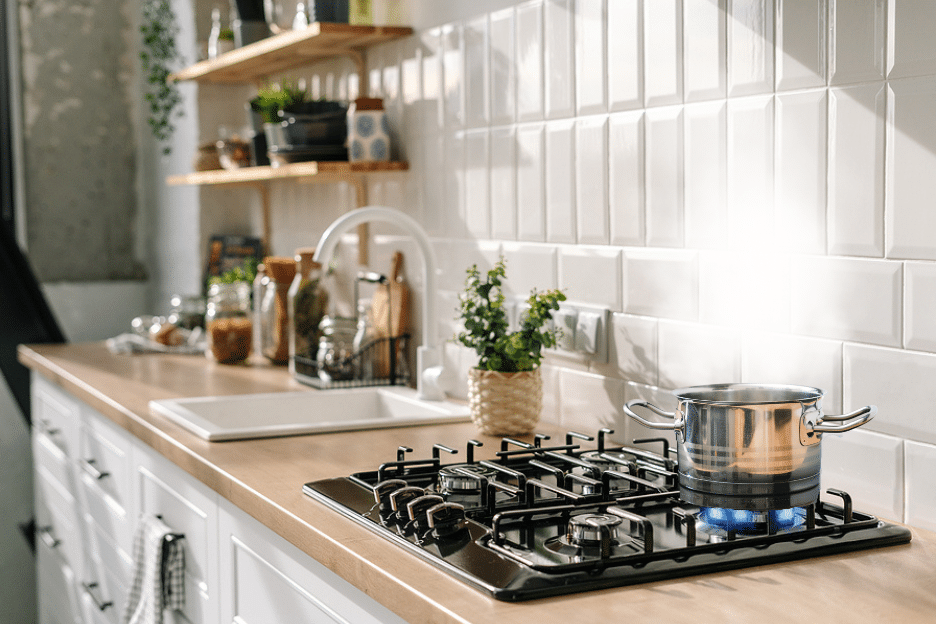12 Tips to Avoid Kitchen Fires (and What to Do if One Occurs)

It isn’t just sharp knives and overindulgence in cooking wine that makes kitchens dangerous places. According to the National Fire Protection Association (NFPA), cooking fires are the leading cause of home fires and home injuries. From 2017-2021, the organization reported, U.S. fire departments responded to an average of 158,400 such fires per year.
That’s a sobering number. And the NFPA has more.
The Grim Statistics on Cooking Fires
- Cooking equipment is the cause of 44% of home fires, 18% of home fire deaths, and 42% of home injuries.
- Ranges or cooktops were involved in 53% of reported home cooking fires, 88% of cooking fire deaths, and 74% of cooking fire injuries.
- More than one-quarter of those killed by these fires were sleeping at the time.
- Unattended equipment is a factor in 28% of reported home cooking fires and in 48% of the associated deaths.
- The most fires due to cooking occur on Thanksgiving, followed by Christmas Eve and Christmas Day.
Electric ranges, the statistics show, pose a higher risk of cooking fires than gas ranges. While 64% of households cook with electricity, electric ranges account for 80% of reported cooking fires.
And if you’re reluctant to dial 911 for a cooking flare-up, consider this: More than half of all non-fatal cooking fire injuries occurred when people tried to fight the fire themselves.
It’s Not All Unwatched Pots
Kitchen fires involve more than hot stuff on the stove. Appliances, both large and small, can be the sources of fires as well. Short circuits, overheated extension cords, and ungrounded (two-prong) outlets and adapters have also been blamed for kitchen fires.
A Dozen Kitchen Fire Safety Tips
Stay safe with these tips from Traveler’s Insurance:
- Never leave the kitchen when you grill, broil or fry.
- Use a timer so that you don’t forget you’re cooking something (until you smell it burning).
- Clean ovens and stovetops regularly to remove oil, grease and other flammable materials.
- Keep flammable items—such as potholders, paper towels, wooden spoons and towels—away from the stove.
- Don’t leave packaging, especially paper packaging, near the stove. (This includes pizza boxes.)
- Inspect power cords on appliances regularly and replace if worn or frayed.
- Never use adapters to insert three-prong plugs in two-prong outlets; instead, rewire older, two-prong outlets.
- Don’t use extension cords with small appliances.
- Completely cool small appliances before storing them.
- Unplug small appliances when not in use.
- Keep appliances clean and free from oil, grease, crumbs and other bits of food.
- Check and clean stove hoods and filters regularly.
Protect Yourself (and Others) from a Kitchen Fire
In addition to the preventive steps above, take action before an incident so you can quickly address any small flare-ups.
- Keep a working smoke detector outside the kitchen.
- Install a carbon monoxide detector outside the kitchen if you have gas appliances.
- Store a dry chemical fire extinguisher in the kitchen.
- Never put water on a grease fire. Instead, smother the flames with a pot lid, or use baking soda or a chemical (not water!) fire extinguisher.
If you have any questions about fire safety and how that can affect your homeowners insurance, or would like a free insurance review, please call us at 877-576-5200.

